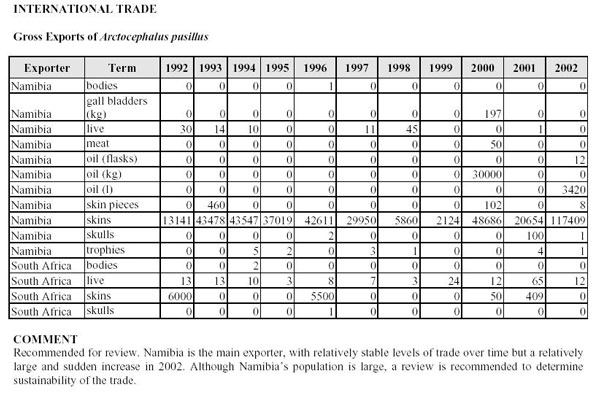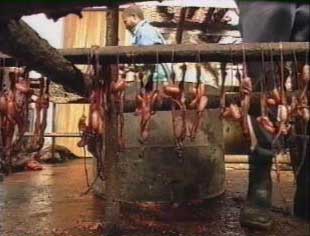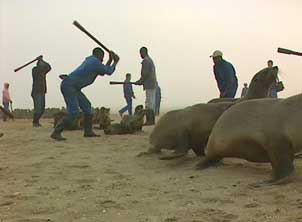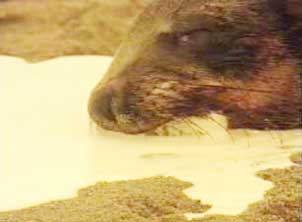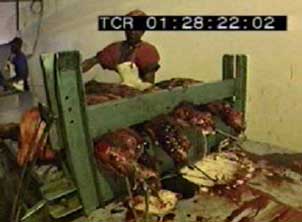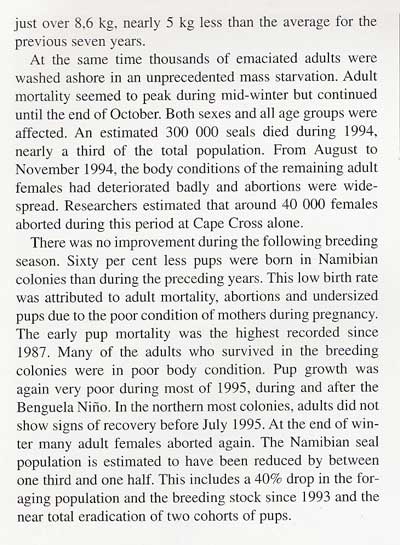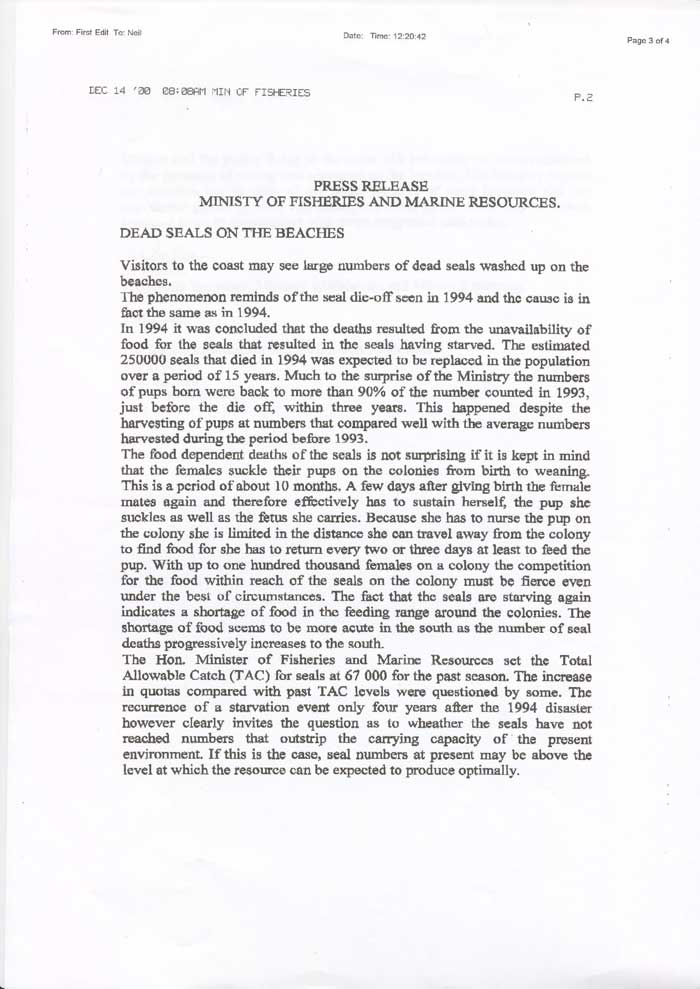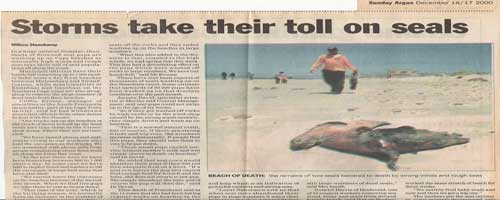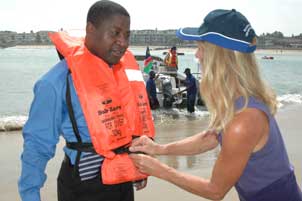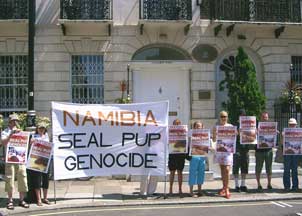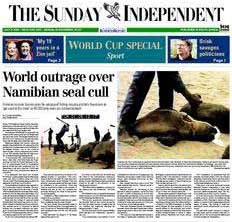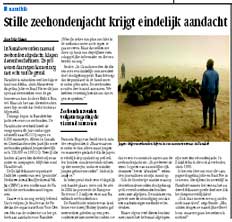Letter To John Sellar of CITES from Francois Hugo ofI ask CITES to consider the implications of the following very seriously;
- The Namibian sealing industry contributes a fraction to the Namibian GDP - in fact less than 0.02% in the fisheries GDP, which is the third largest contributor to the economy. As an employer of jobs, it creates employment for between 14 and 150 part-time, migrant workers working from August to November. Income in 2000, from 42 000 seals earned Namibian $600 000 - which is equal to USD $100 000 for whole industry.
- It is the mandate and objective of Seal Alert-SA to secure the future survival of the Cape fur seals through sound conservation - the sealing industry must therefore be stopped, as it has been done, in South Africa in 1990 and throughout its distribution range except Namibia.
- It is not the mandate or intention of Seal Alert-SA to harm the Namibian economy is any meaningful way, (except to end sealing) however as in the case of South Africa, legal wildlife trade is a major source of revenue, and therefore illegal trade is regarded as a threat to the economy - the penalty of any illegal trade - would involve a complete ban of all wildlife trade and the possibility of other countries being prevented from trading.
- CITES needs to urgently consider this position and translate these concerns to Namibia urgently, not only the Minister of Fisheries responsible for sealing (as he might already be compromised) but the President as well - the reason Seal Alert-SA states this is as follows;
- Immediate cessation of the Seal Harvest, based on the allegations made to date (impact to the Namibian economy negligible); or alternatively
- Seal Alert-SA is forced to continue with substantial evidence that in the end, will place CITES and the violations of its convention in such a serious light - that a total ban on all wildlife trade will become the only alternative penalty due to the severity of the violations (impacting severely on the Namibian economy) - and on all wildlife trade, not just the sealing industry.
- It is not the intention of Seal Alert-SA to cause the cessation of all wildlife trade in Namibia, as a penalty - it seeks only to end sealing immediately.
Please could CITES therefore convey these real concerns to the Namibian officials - and request their immediate voluntary announcement to end sealing. Should Namibia accept this offer - Seal Alert-SA will do everything in its power to communicate this to its 12 million supporters and promote the Namibian tourism economy. South Africa has a thriving seal-viewing eco-tourism industry which has existed for over 25-years - one island colony alone, has become one of the top ten attractions in the western Cape, where over 400 000 tourists are ferried annually earning over R20 million in direct ticket sales or USD 3.5 million.Seal Alert-SA would just need to ensure that less than 200 tourists visit Namibia who otherwise would not have, due to its sealing policy in order for Namibia and its citizens to be fully compensated.It is important to understand the information provided by Seal Alert-SA does not relate to a single alleged incident - but instead a whole range of conservation, trade and harvest issues that in fact go back decades of mismanagement - which in our opinion, is a threat to the future survival of this species. The whole reason for CITES existence and hence why it has been reported to you. In addition, Seal Alert-SA intends to use every means at its disposal, including undercover work to continue to investigate this industry until sealing has stopped.Let us deal primarily with CITES involvement with International Trade; Conservation of Specie - killing of nursing pups; Findings of the 'Review of Significant Trade'; Sustainable harvests and the Current Harvest - ignore all welfare aspects.International Trade :Taken from the CITES 2004 Animals Committee MeetingVideo evidence of Namibian Sealers in 1993Correct me if I am wrong. It was acknowledged today by CITES that as per the above chart - no export permits was granted by CITES for any of the above seal products other than those detailed above for the period 1992 - 2002. It was further acknowledged that Cites Secretariat has taken the Cites Animals Committee to task on this. (It should therefore be noted that this in no way removes the fact that Namibia has been in violation of the Cites Convention). Namibian Ministry of Fisheries has stated "sealing regulations require the use of the whole carcass".Sealing quota for 2006 - is as follows. Namibia Venison & Marine Exporters 38 050 seals. Sealion Products 32 950 and Cape Cross Seals 20 000. In the 1994 - 22 edition of the Fishing Industry Handbook - Namibia Venison & Marine Exporters lists his sealing concession products as producers of carcases and (seal) meal and a processor of seal skins - and in 2002, lists in addition seal oil and seal skin products. Sealion Products lists it simply as seal products.On the 17th December 1999 owner of Sealion Products, Albert Brink to the Namibian newspaper, "concentrates only on the killing of seals for export of different parts".Based on the above during the period 1992 - 2002, over 404 479 seal skins were exported (Cites International Trade) on a TAC quota of 467 000 seals. Representing an international trade of 87% on set annual quotas.( it must be noted that sealers have consistently reported being unable to fill their quotas - that it is safe to assume all seal harvests are for International Export and Trade).Seal Alert-SA was told by a sealer that he could only harvest 80% of his TAC quota in 2005 as their were no more pups to harvest by end of season. From the above table for the period 1989 - 1996 by the Ministry of Fisheries of Namibia. We can see that although Fisheries set a "sustainable TAC" for the period of 258 800 seals - sealers were only able to harvest 173 229 or 67%. This raises serious concerns, namely;
processed, of nursing harp seal pups and nursing hooded pup seals in birthing or breeding grounds.
